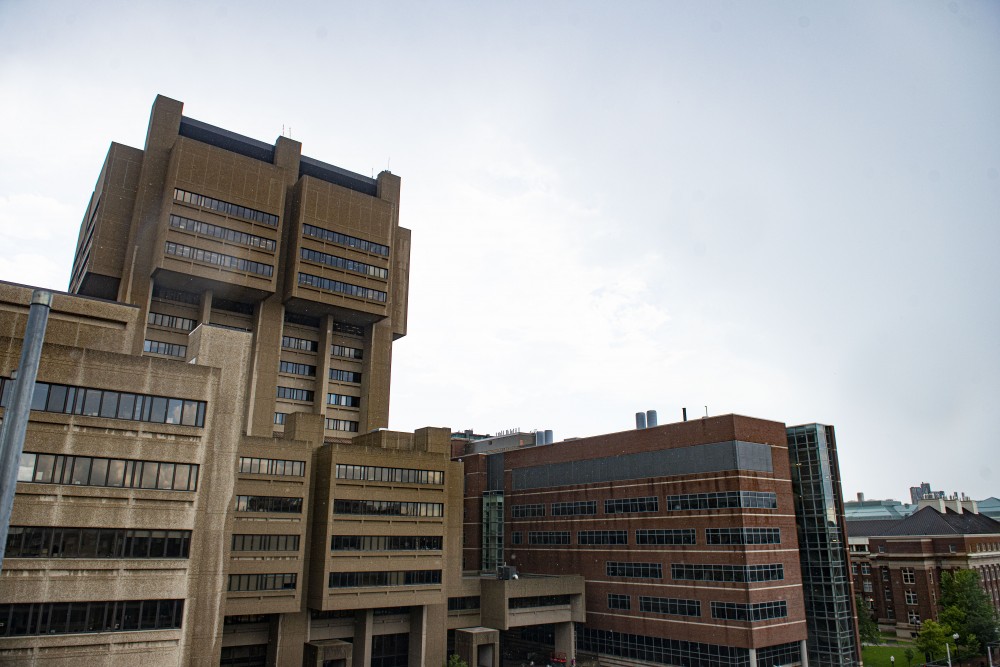F
ighting deadlines, busy class schedules and work; it’s a problem when students sit in traffic.
Alleviating congestion is always a task for transportation officials. How to pay for improvements remains another issue.
Yet, officials see the future transportation solutions in light rail, toll roads, road construction and the Northstar commuter rail line.
Light rail
Metro Transit plans to open the remaining portion of the Hiawatha light rail line Dec. 4, and some officials are already looking to expand with a Central Corridor route that could run through the University.
Before the next legislative session, the Metropolitan Council is expected to decide whether to pursue the Central Corridor light rail project or more bus routes.
Rail-supporter and Hennepin County Commissioner Peter McLaughlin said the rail advisory committee he serves on recommended that the Met Council favor an expansion of light rail over the possible new bus-only lanes, also called bus rapid transit.
If the Central Corridor project is to continue, it will need planning money for the next two years, he said. Following planning, the project would then need bonding money to construct the light rail line, McLaughlin said.
Getting support from legislators for light rail expansion will be tough, McLaughlin said. Yet, the success of the Hiawatha line will change the political mood, he said.
State Rep. Peter Adolphson, R-Minnetonka, said he is skeptical about light rail.
He said that once the Hiawatha line is complete, it will have cost $800 million. He said that is the same amount of money spent on all highway projects at the last legislative session.
The Hiawatha line operation uses state and county subsidies, which is common for similar transit systems around the country, Adolphson said.
But, light rail causes more traffic problems, he said. Problems with the trains getting right of way can also slow down emergency vehicles and cause general traffic congestion, he said.
McLaughlin said the Central Corridor line would start at the Hiawatha line in the warehouse district, run through downtown Minneapolis, cross the Washington Avenue Bridge to the University, probably tunnel underneath campus and go to St. Paul, mostly along University Avenue.
The possible Central Corridor line is projected to have 38,000 riders per day, which would be one of the busiest start-up lines in the country, he said.
First-year political science student Qoran Yusuf said she takes Metro Transit buses to Coffman Union. She said she would use the Central Corridor if it went where she wanted to go faster.
McLaughlin said there are many reasons to use public funds for the Central Corridor.
For University students, parking is an issue, and the line would help, he said.
Interstate 94 cannot expand without high costs and “incredible community destruction,” McLaughlin said.
Adolphson said he agrees with projections that the Central Corridor would be the most well-used line in Minnesota, but the line has too many unresolved issues. For example, he said, he is concerned that the Central Corridor line would cause congestion at University Avenue intersections, as current slow-downs along the Hiawatha line.
Crosstown
The Crosstown, intersection, at Interstate Highway 35W and Crosstown Highway 62, is the busiest corridor in the state, according to Jeanne Aamodt, Minnesota Department of Transportation program supervisor.
The two freeways join for three lanes, creating merging and congestion problems.
Most metro-area officials said they agree that a fix is needed, yet how to solve the issue is another story.
The MnDOT plan to resolve the Crosstown issue is to redesign the intersection and include bus rapid transit from 66th Street to 42nd Street.
That plan unanimously failed in the Minneapolis City Council by a 13-0 vote.
Council member Scott Benson, Ward 11, said bus rapid transit does not help downtown Minneapolis and that there is no funding plan to operate it.
But delays, such as the no vote by the City Council, can slow the process and cost a lot of money, Aamodt said.
Minneapolis’ desire to extend bus rapid transit downtown and demand the state to pay for it is impractical, she said.
While delays might occur, Benson faulted MnDOT for not giving the City Council enough time to provide “meaningful input” into the process. MnDOT is appealing the city’s decision.
Tolls
University psychology senior Amy Leite commutes daily on Interstate 394 from St. Louis Park, Minn., to the University.
Leite said she leaves every day in the early morning and the roads are very busy. Her story is one of many.
In April, solo commuters will be able to start avoiding some congestion along the popular route by using an existing carpool lane and paying a toll.
Another project in the works is for private companies to build toll lanes, Aamodt said, though MnDOT is still considering the feasibility of the projects.
Aamodt said the I-394 stretch will cost $8 million to $10 million to start, but she said it is worthwhile, considering the benefit to commuters.
First-year biology student Maureen Penning said it is expensive enough to drive and more costs are not needed.
Northstar commuter rail
Legislators will consider funding the Northstar commuter rail line in the upcoming session.
Organizers will need $265 million in funding for the proposed rail line from downtown Minneapolis to Big Lake, Minn., said Brian McClung, Gov. Tim Pawlenty’s press secretary.
The area from Minneapolis to St. Cloud, Minn., is the third-fastest growing corridor in the nation, he said.
The governor supports the Northstar line, which differs from light rail projects because it could use existing track, McClung said.
The trip from Minneapolis to Big Lake should take 35 minutes at a maximum speed of 80 mph. There will be 5,500 estimated daily trips, he said.
















